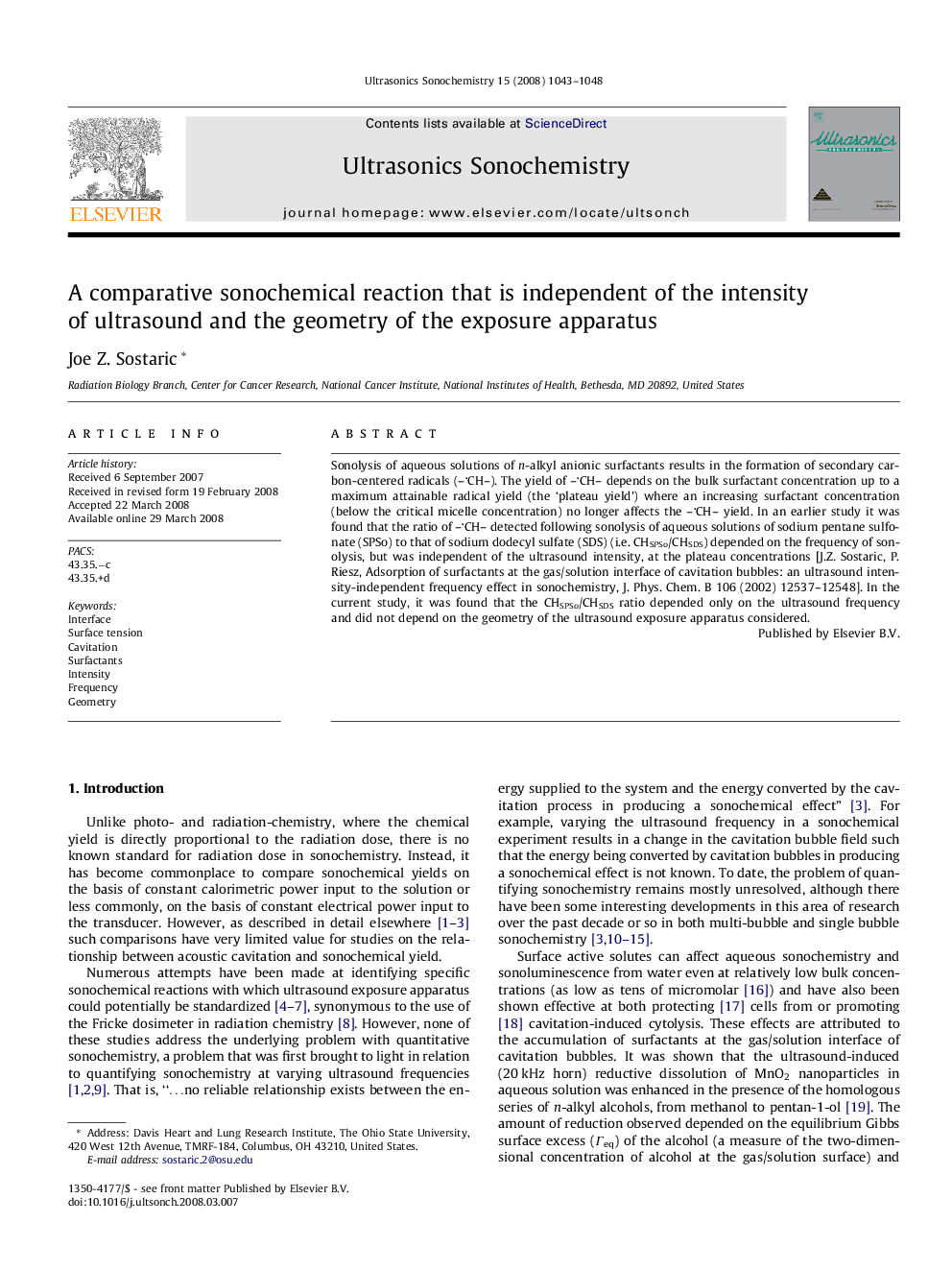| Article ID | Journal | Published Year | Pages | File Type |
|---|---|---|---|---|
| 1270772 | Ultrasonics Sonochemistry | 2008 | 6 Pages |
Abstract
Sonolysis of aqueous solutions of n-alkyl anionic surfactants results in the formation of secondary carbon-centered radicals (-CH-). The yield of -CH- depends on the bulk surfactant concentration up to a maximum attainable radical yield (the 'plateau yield') where an increasing surfactant concentration (below the critical micelle concentration) no longer affects the -CH- yield. In an earlier study it was found that the ratio of -CH- detected following sonolysis of aqueous solutions of sodium pentane sulfonate (SPSo) to that of sodium dodecyl sulfate (SDS) (i.e. CHSPSo/CHSDS) depended on the frequency of sonolysis, but was independent of the ultrasound intensity, at the plateau concentrations [J.Z. Sostaric, P. Riesz, Adsorption of surfactants at the gas/solution interface of cavitation bubbles: an ultrasound intensity-independent frequency effect in sonochemistry, J. Phys. Chem. B 106 (2002) 12537-12548]. In the current study, it was found that the CHSPSo/CHSDS ratio depended only on the ultrasound frequency and did not depend on the geometry of the ultrasound exposure apparatus considered.
Related Topics
Physical Sciences and Engineering
Chemistry
Chemistry (General)
Authors
Joe Z. Sostaric,
